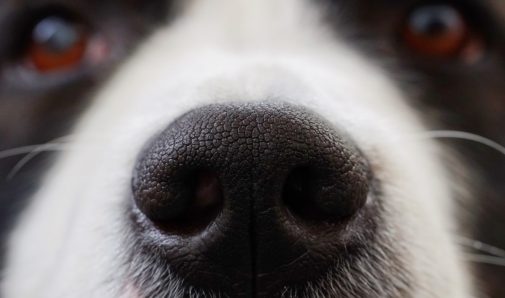
There’s a name for pink noses, a name for a part of a dog’s external nasal cavity, a name for the line that separates the left and right upper lip and nostrils of a dog, a name for a dog’s nostrils, and a name for the ridge pattern on their nose. Oddly, there is no name for the slits at the sides of a dog’s nose beyond “slits at the side of a dog’s nose.”
There’s more. What we often call “nose leather” is the rhinarium, that area of moist, furless skin that’s the dog’s nose. It’s not something most of us notice, but did you know that when your dog is sniffing, the mobile part of his or her nose is moved and the shape of the nostrils actually changes? Flaring nostrils to sniff changes the shape of the openings to allow redirection of air into the upper part of the dog’s snout, and thus more direct airflow to the olfactory area. A very large surface area for the air that’s breathed in to pass over is made possible because a dog’s long nose contains a labyrinth of thin bones called turbinates, all of which are lined by an epithelium that provides mucus to which scent cells attach. This is why sniffer dogs are Bloodhounds, Labs, and Springers as opposed to Pugs and Frenchies.
Your dog’s nose also has ligaments! Three, to be exact. A pair (that would be two), and one that’s unpaired, and they attach the mobile part of the nose to the dorsal portion of the bony part. Interestingly, ligaments are best developed in old dogs of working breeds.
